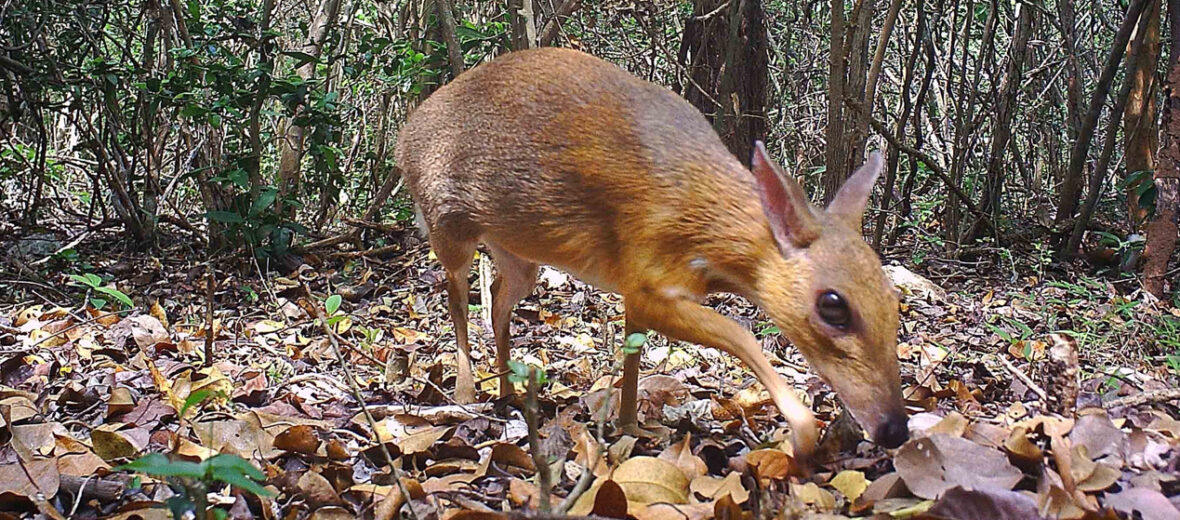
Once thought extinct, the silver-backed chevrotain was recently rediscovered in Vietnam in 2019! It had been 30 years since the last sighting. It was found by the Global Wildlife Conservation and partners Southern Institute of Ecology and Leibniz Institute for Zoo & Wildlife Research. Scientific journal Nature Ecology & Evolution published the rediscovery in November of 2019. The chevrotain is the world’s most diminutive ungulate (hoofed mammal).
First the Stats…
Scientific name: Tragulus versicolor
Weight: Up to 3.74 lbs.
Length: Up to 18+ inches
Height: Up to 12 inches, at the shoulder
Lifespan: Up to 13 years
Now on to the Facts!
1.) These tiny deer-like creatures are listed as Critically Endangered by the IUCN.
2.) They are members of the mouse deer family, but are neither mice, nor deer.
3.) The chevrotain has 2 sharp fangs that are used during their fierce combat with rival males, during breeding season.
4.) Just like deer and other hoofed animals, they have a multi-chambered stomach and even-toed hooves.
5.) Unlike deer, chevrotains have a 3 chambered stomach, not 4.
But wait, there’s more on the silver-backed chevrotain!
6.) Scientists classifiy these cute critters as an evolutionary link between ruminants (acquire nutrients from plant-based food by fermenting it in a specially evolved stomach prior to digestion) & non-ruminants.
7.) Silver-backed chevrotains can also swim, well, sort of. They wade through the water and use reeds and river grasses to hold onto, while crossing. That way they don’t get swept away.
Did you know…?
Silver-backed chevrotain females have a reputation of being nearly always pregnant. They carry their baby for up to 9 months and merely hours after birth, they can get pregnant again!
8.) When threatened, these silver-backed critters will stomp around the ground 4 – 7 times a second to ward off predators and warn other neighboring chevrotains of impending doom.
9.) These particular chevrotains can only be found in dry coastal forests in Nha Trang and Khanh Hoa Provinces.
10.) Their predators are many, from animal to human. This, coupled with basically no defense, is why they remain so secluded and solitary.
Now a Short Silver-Backed Chevrotain Video!
Also, check out the Critter Science YouTube channel. Videos added frequently!
Want to suggest a critter for me to write about? Let me know here.



